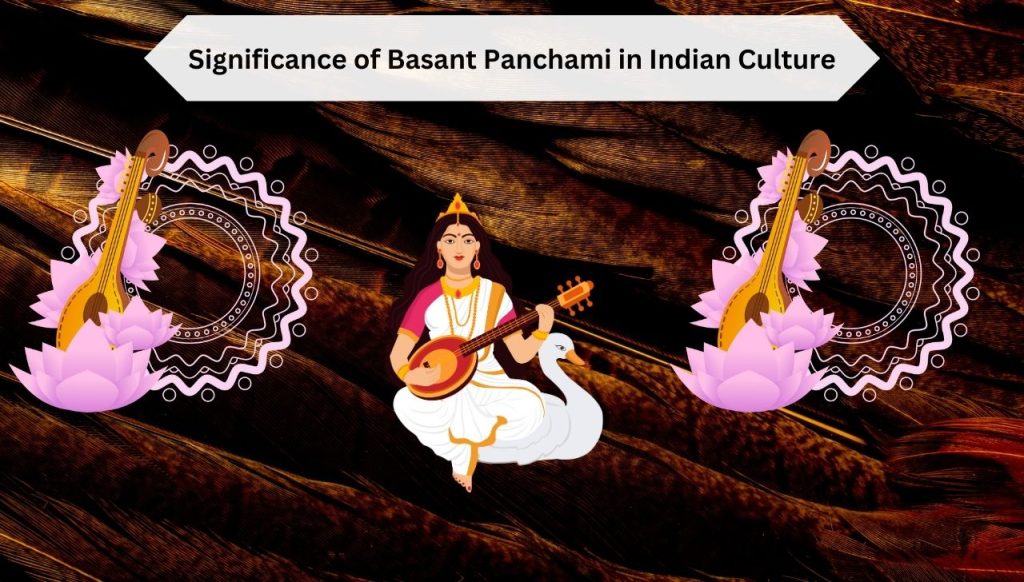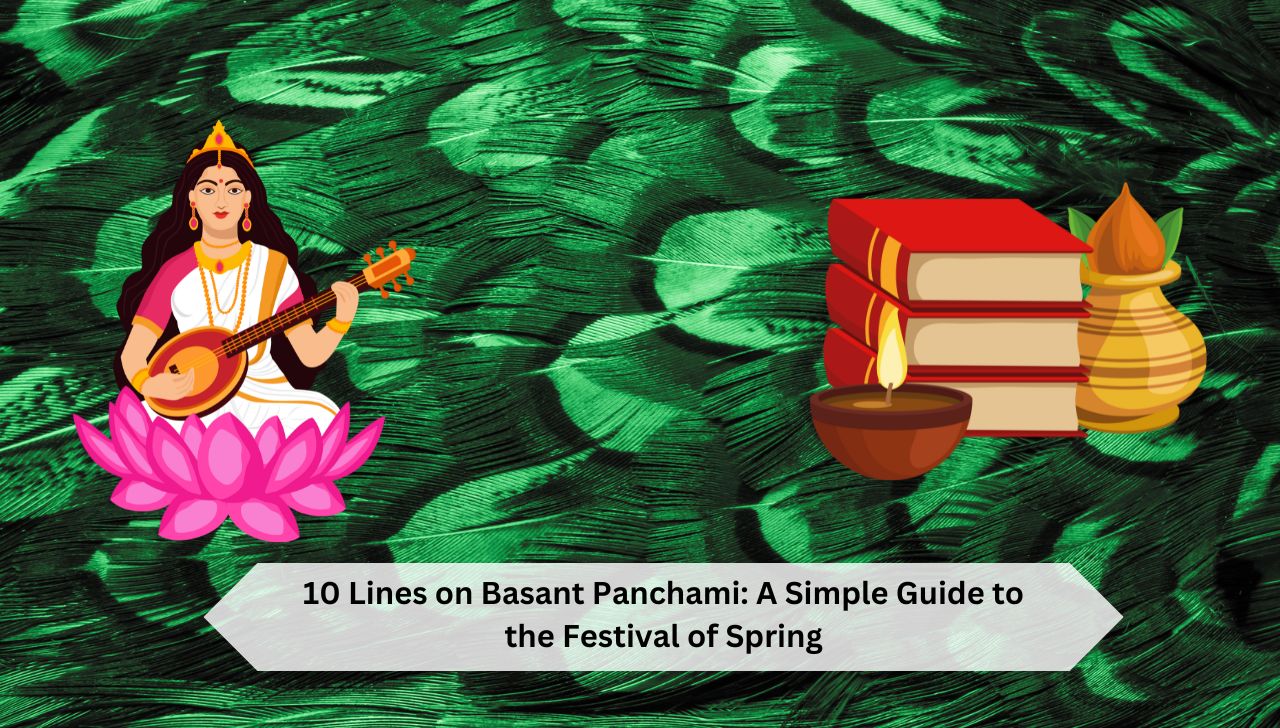Basant Panchami, or Vasant Panchami, is a festival that welcomes spring in India. It’s primarily celebrated in the northern regions. The festival happens on the fifth day of the Hindu month of Magha, which usually falls in late January or early February. It marks the end of cold winter days and the start of warmer weather. During this festival, people get involved in fun activities like kite flying and wearing yellow clothes. Yellow represents the energy and richness of spring.
Schools and colleges often celebrate by honoring Saraswati, the goddess of knowledge. This shows how much the festival values education and the arts. In simple terms, Basant Panchami is a time when people enjoy the upcoming warmth, engage in cultural activities, and focus on learning and creativity. It’s a vibrant and meaningful celebration in the Indian calendar.
Significance of Basant Panchami in Indian Culture
Basant Panchami is more than just a festival in India; it’s a vital part of the culture, deeply woven into the social and spiritual life of the people. This festival welcomes spring, a time for nature to renew itself, and it’s also a time for people to refresh their spirits and start new.

Everyone, especially in areas like art and education, feels its impact. People honor Saraswati, the goddess of knowledge and arts at schools and other learning places. It’s an important day to start teaching young people. Yellow is everywhere, inspired by the lively spring season and mustard fields in bloom. On a social level, Basant Panchami brings people together. It’s a chance for communities to meet, enjoy special foods, and watch cultural performances. It’s all about unity and enjoying the company of others.
10 Lines on Basant Panchami in English:
Basant Panchami is a vibrant festival marking the arrival of spring. Celebrated with devotion and joy, it signifies new beginnings and renewal. People honor Goddess Saraswati, the goddess of wisdom. The yellow color, symbolizing prosperity, dominates the celebrations. This day brings together culture, music, and dance in colorful harmony.
- Basant Panchami marks the arrival of spring, celebrated with enthusiasm across India.
- The day is dedicated to Goddess Saraswati, the goddess of wisdom and knowledge.
- Yellow, the color of prosperity and energy, is prominently worn on this day.
- People offer prayers to Goddess Saraswati for success in learning and arts.
- The festival is celebrated with traditional music, dance, and outdoor activities.
- Kite flying is a popular pastime during the Basant Panchami celebrations.
- Devotees gather at temples, chanting hymns and participating in rituals.
- The season’s first flowers bloom, adding to the festival’s festive spirit.
- Sweet dishes like halwa and kachoris are prepared and shared among loved ones.
- Basant Panchami is a day of renewal, where the past is left behind, and new opportunities are embraced.
The History Behind Basant Panchami
Basant Panchami is a festival that welcomes spring, marking the end of winter. It’s believed to be the birthday of Goddess Saraswati, who represents wisdom, arts, and music. The festival has old roots and is mentioned in ancient texts like the Puranas, which talk about the rituals and how people celebrate on this day.
Each region in India might celebrate it differently, showing local customs and history. Basant Panchami happens on the fifth day of the Magha month. This time usually matches when mustard flowers bloom, covering the fields in bright yellow. It’s a time of renewal and fresh starts.

10 Lines on Basant Panchami in Hindi:
बसंत पंचमी भारतीय संस्कृति में एक महत्वपूर्ण त्योहार है। यह वसंत ऋतु के आगमन का प्रतीक है। इस दिन का खास महत्व देवी सरस्वती की पूजा से जुड़ा है। लोग इस दिन को खुशी और समृद्धि के प्रतीक रूप में मनाते हैं। खासकर शिक्षा, कला, और ज्ञान के क्षेत्र में इसे एक नई शुरुआत माना जाता है।
- बसंत पंचमी वसंत ऋतु के आगमन का उत्सव है।
- इस दिन विशेष रूप से देवी सरस्वती की पूजा की जाती है।
- लोग पीले रंग के कपड़े पहनते हैं, जो खुशी और समृद्धि का प्रतीक होते हैं।
- बच्चों को इस दिन किताबों और लेखन सामग्री की पूजा करने की परंपरा है।
- कच्चे आमों और ताजे फूलों से बसंत की स्वागत की जाती है।
- मंदिरों में श्रद्धालु देवी सरस्वती की भव्य पूजा करते हैं।
- इस दिन को ज्ञान और विद्या की देवी सरस्वती के आशीर्वाद के रूप में मनाया जाता है।
- खेतों में नई फसल की शुरुआत और हरियाली की धूम होती है।
- महिलाएं इस दिन खास पकवान बनाती हैं और पारंपरिक नृत्य करती हैं।
- बसंत पंचमी एक खुशहाली और नई शुरुआत का पर्व है।
Conclusion
Basant Panchami is still all about celebration, even though we celebrate it differently now. As our world changes, so does how we enjoy this bright festival. These days, we often celebrate online, sharing the fun on social media so everyone can join, no matter where they are. But we still focus on the important stuff—honoring Saraswati and welcoming spring.
Schools still hold special events and prayers, showing how much we value knowledge and learning. Even though the ways we celebrate might change, the heart of Basant Panchami stays the same. It’s a time for fresh starts and showing respect. This festival connects people across different ages and cultures and keeps its meaning in our fast-paced, ever-changing world.
